Tuesday
11.2025
10 Stunning Ethnic Villages in Ha Giang Worth Visiting
11 Apr - 2025
Nestled in the northernmost corner of the country, Ha Giang is home to various ethnic groups with distinct lifestyles, traditional houses, and colorful customs. Exploring the ethnic villages in Ha Giang offers a unique opportunity to connect with local culture, taste authentic food, and witness life untouched by mass tourism. If you’re looking for cultural immersion and breathtaking landscapes, these villages in Ha Giang are must-see destinations. Let’s join Ha Giang Motorbike Tours and discover the best villages in Ha Giang in this article.
The best way to experience Ha Giang’s cultural depth is to visit its remote, scenic villages. These villages are more than just beautiful. They preserve centuries-old traditions, handmade crafts, and close-knit community life. Below are the most beautiful villages in Ha Giang that deserve a spot on your itinerary.
>>Reading more: 13+ Things To Do In Ha Giang: Must-Visit Places And Activities
Du Gia is a tranquil escape ideal for slow travel, tucked in a quiet valley surrounded by terraced rice fields. This Vietnam Ha Giang village is home to the Tay people, who live in traditional stilt houses and simply farm. When visiting Du Gia Village, tourists can experience staying in homestays, observing waterfalls in Ha Giang, and immersing themselves in a slower pace of life. Du Gia offers a serene atmosphere and warm local hospitality compared to other scenic villages in Ha Giang. It’s a perfect place to unwind and understand rural life in northern Vietnam.
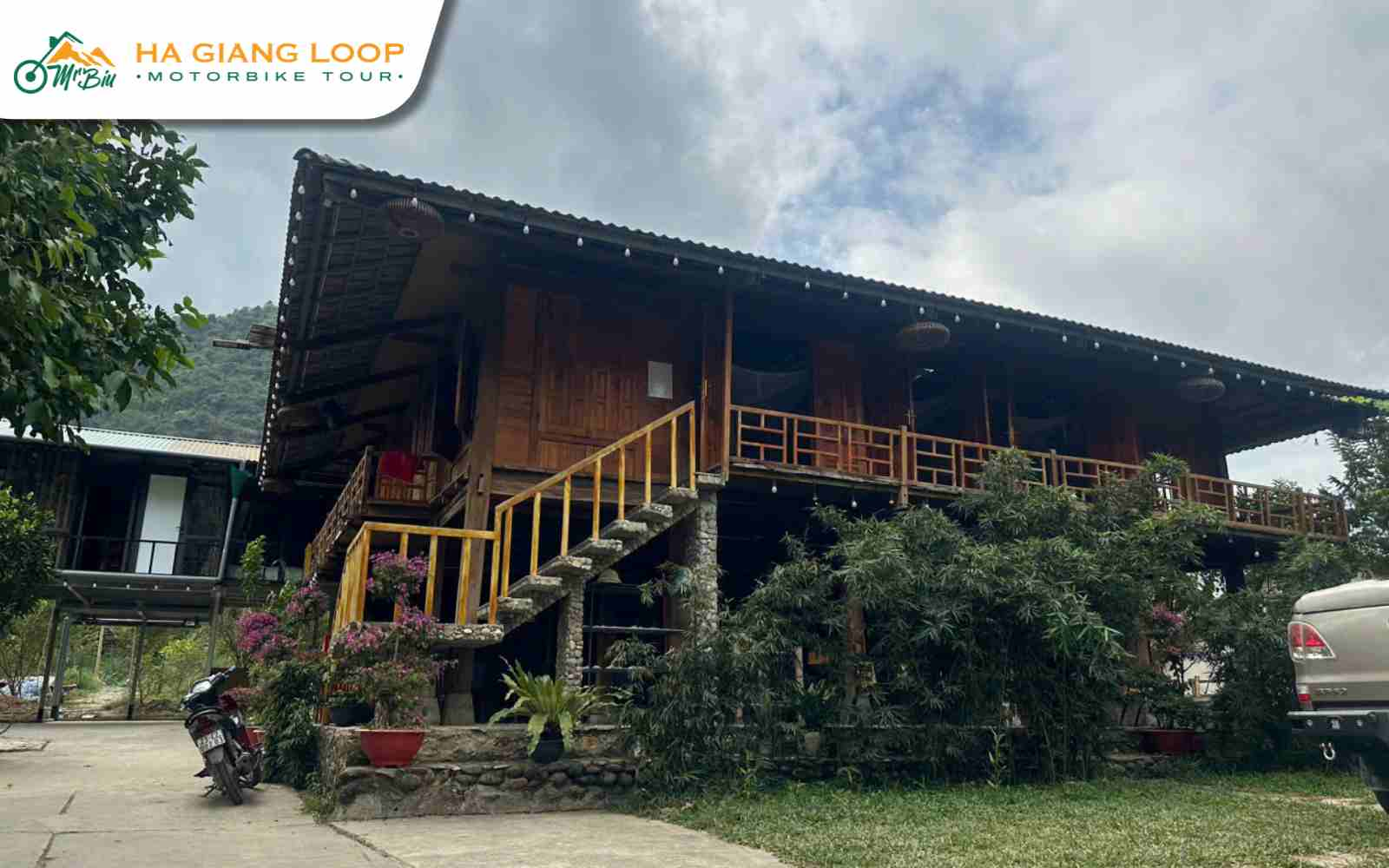
Nam Dam stands out among the best villages in Ha Giang for its authenticity and cultural richness. Located near the famous Quan Ba Heaven Gate and the striking Twin Mountains, this well-preserved settlement is home to the Dao ethnic group, known for its distinctive red attire and deep-rooted spiritual traditions.
Travelers can stay in traditional homestays and participate in daily life, from crafting corn wine to witnessing herbal medicine preparations. Another highlight is the Dao herbal bath—a unique wellness experience that uses locally foraged ingredients. Besides, you can take a short hike from the village to a serene waterfall to enjoy scenic views and a refreshing stop.
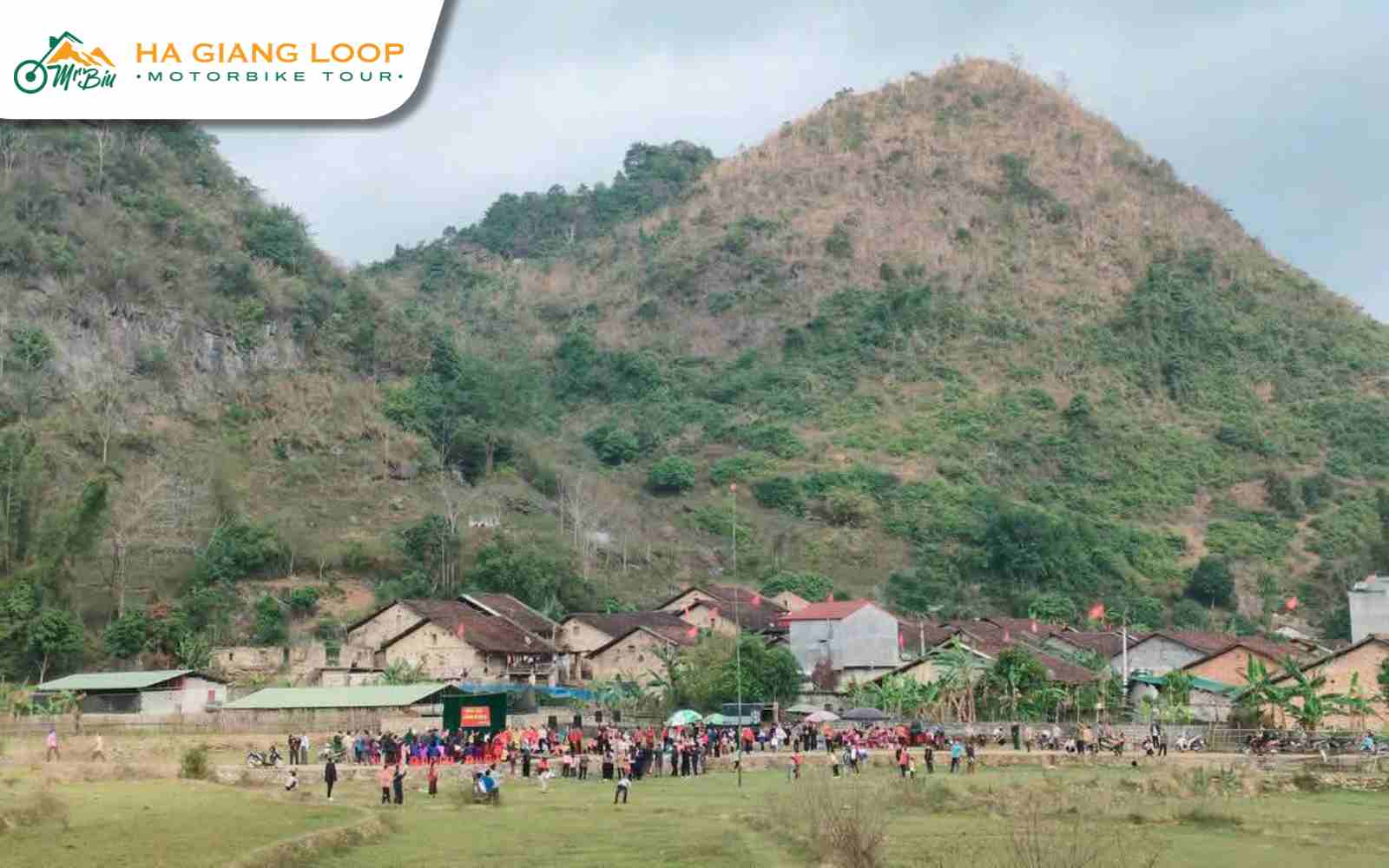
If you’re looking to support local livelihoods and experience rural authenticity, Thon Tha Village is one of the traditional villages in Ha Giang that you shouldn’t skip. Just a few kilometers from Ha Giang City, this peaceful village offers a rare chance to connect with authentic Tay ethnic culture and entertain visitors with green rice paddies and gentle hills, with traditional wooden stilt houses lining narrow paths. It’s a cultural destination in Ha Giang that perfectly blends simplicity, tradition, and natural charm.
What makes it one of the must-visit villages in Ha Giang is its simplicity — no loud traffic, no commercialized tourism, just real people and quiet landscapes. Travelers can enjoy local homestays, taste home-cooked Tay cuisine, and walk to scenic viewpoints or nearby waterfalls. As one of the most accessible ethnic villages in Ha Giang, Thon Tha is ideal for those seeking meaningful cultural exchange.
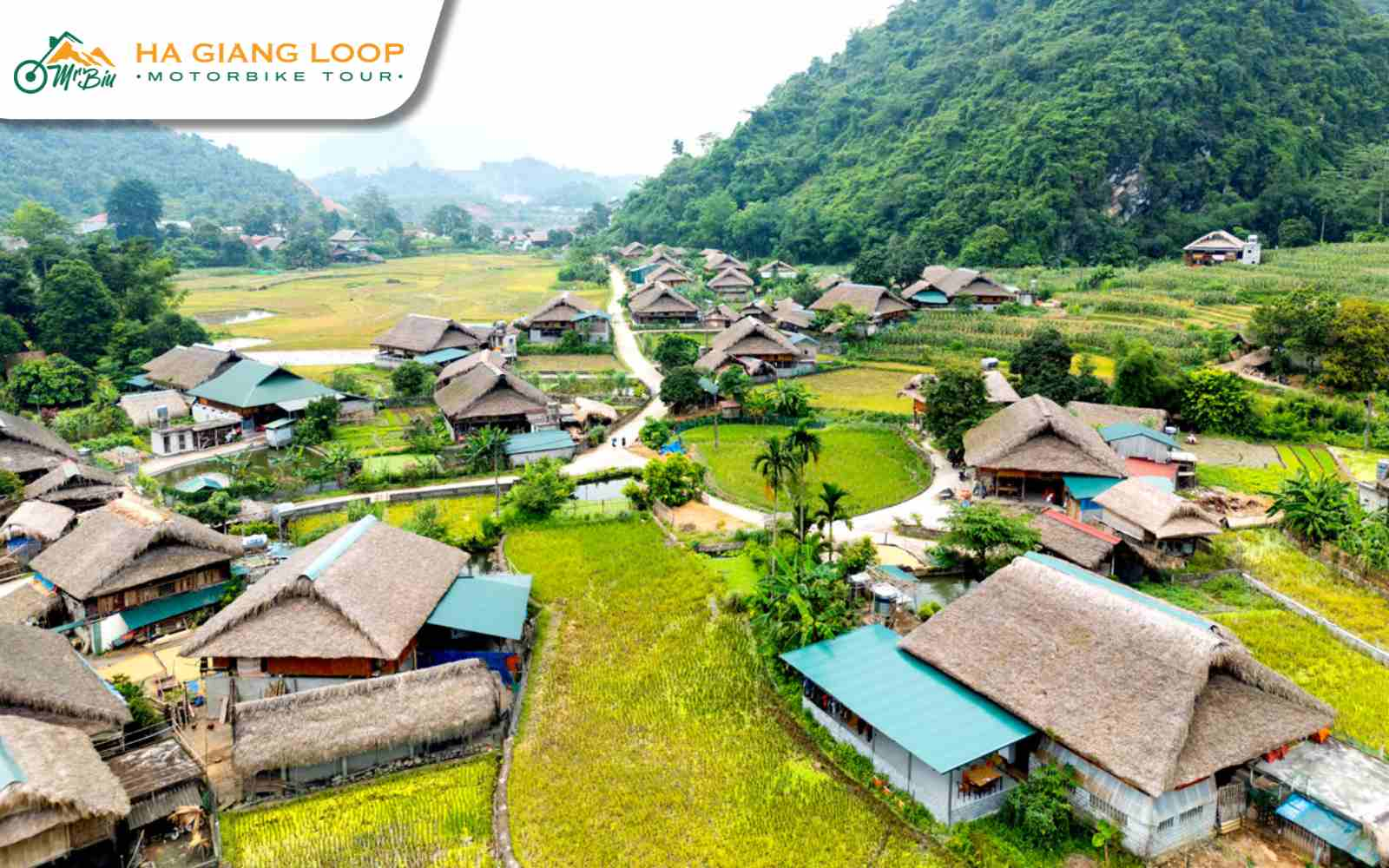
Lung Cam rose to fame as the filming location of the Vietnamese movie The Story of Pao, but it offers much more than cinematic charm. Surrounded by blooming buckwheat flowers in autumn, the village is inhabited by H’Mong and Lo Lo people. When setting foot in Lung Cam Village, you’ll find stone houses, handwoven garments, locals still practicing age-old customs, and immersing yourself in natural beauty. It’s one of the most beautiful villages in Ha Giang for photography lovers and cultural explorers alike.

Deep in the rocky highlands near Dong Van, Lao Xa is a lesser-known Ha Giang village to visit that captivates with its quiet charm and artistic spirit. This small H’Mong village is best known for its exquisite handicrafts, especially silver jewelry and handwoven textiles. Local artisans work with age-old tools, creating intricate patterns passed down through generations. For those who love to explore Lao Xa Village, the best way to experience this region is to walk along the quiet stone paths, watch children play barefoot, and observe artisans at work right outside their homes.
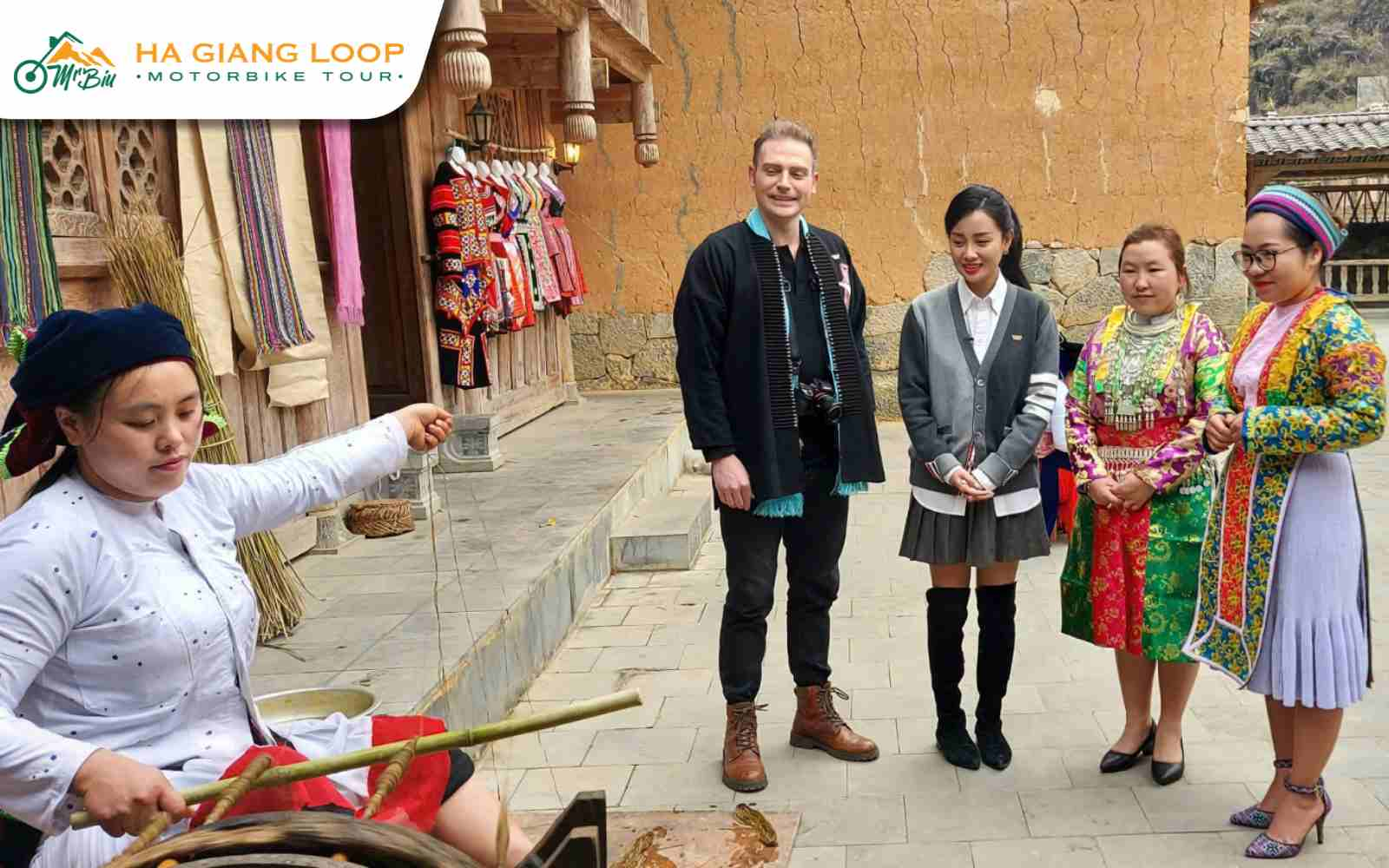
Read more: Discover the Top 12 Traditional Ha Giang Markets That You Must Know
Located just 1 km from the Lung Cu Flag Tower, right near the China border, Lo Lo Chai is a vibrant yet peaceful village of Ha Giang that offers a rare glimpse into the life of the Lo Lo ethnic group — one of Vietnam’s smallest and most distinct communities. The village is known for its black earthen houses built from clay, stone fences lining narrow paths, and terraced flower gardens that change with the seasons.
Unlike other ethnic villages in Ha Giang, Lo Lo Chai invites travelers to slow down to sip tea by a fire, listen to traditional Lo Lo music, or stay overnight in a homestay for an authentic cultural exchange. With its unique blend of architecture, tradition, and hospitality, Lo Lo Chai stands out as one of the most beautiful villages in Ha Giang and is a must for anyone seeking genuine ethnic encounters.
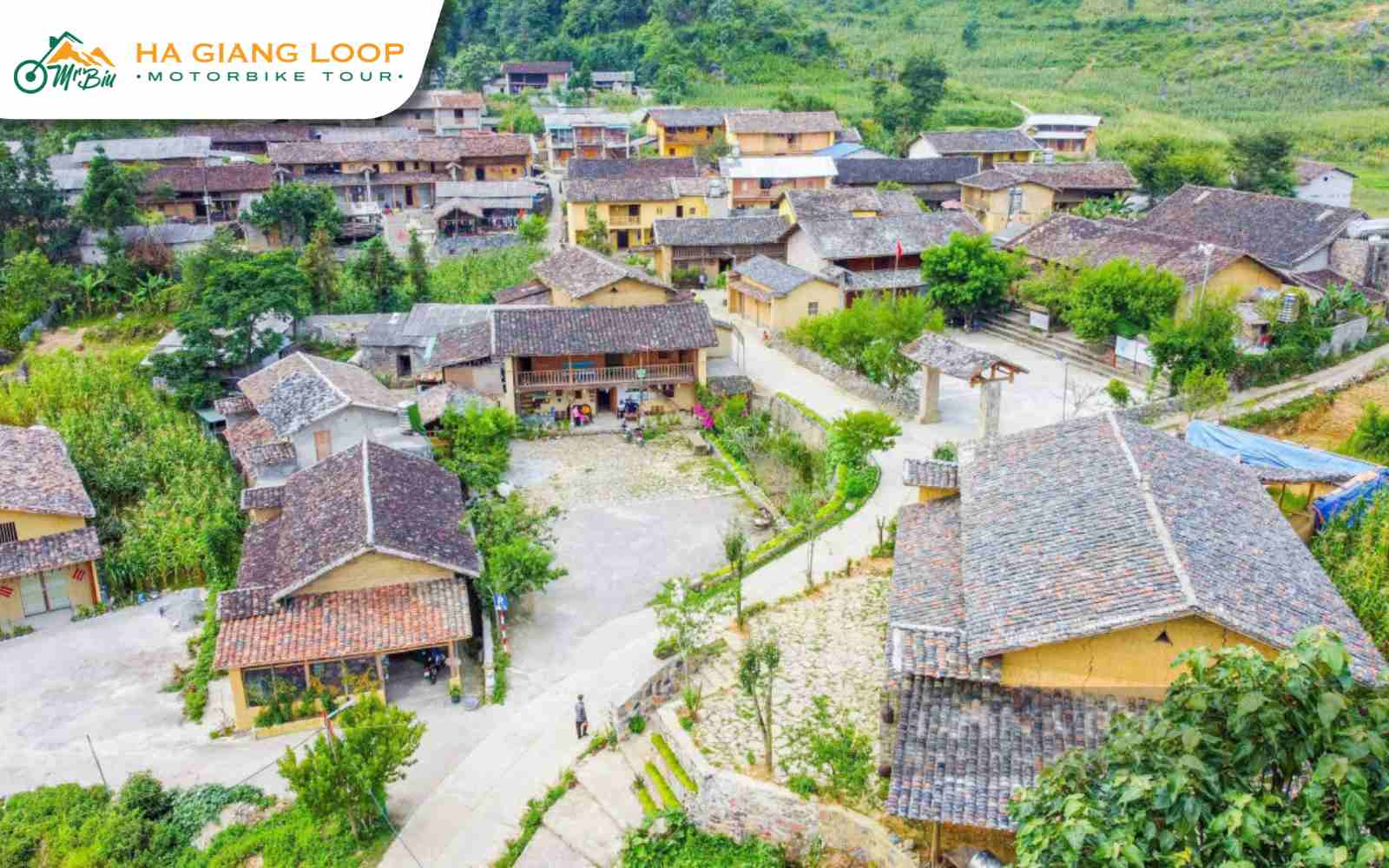
For those interested in traditional crafts, Lung Tam is a must. This conventional village in Ha Giang is renowned for its handmade hemp textiles, which were produced by H’Mong women using natural dyes and unique techniques passed down for generations. From planting hemp to weaving and dyeing, each step is done 100% by hand. Visitors can tour workshops, buy souvenirs, and even try weaving in Lung Tam Village.
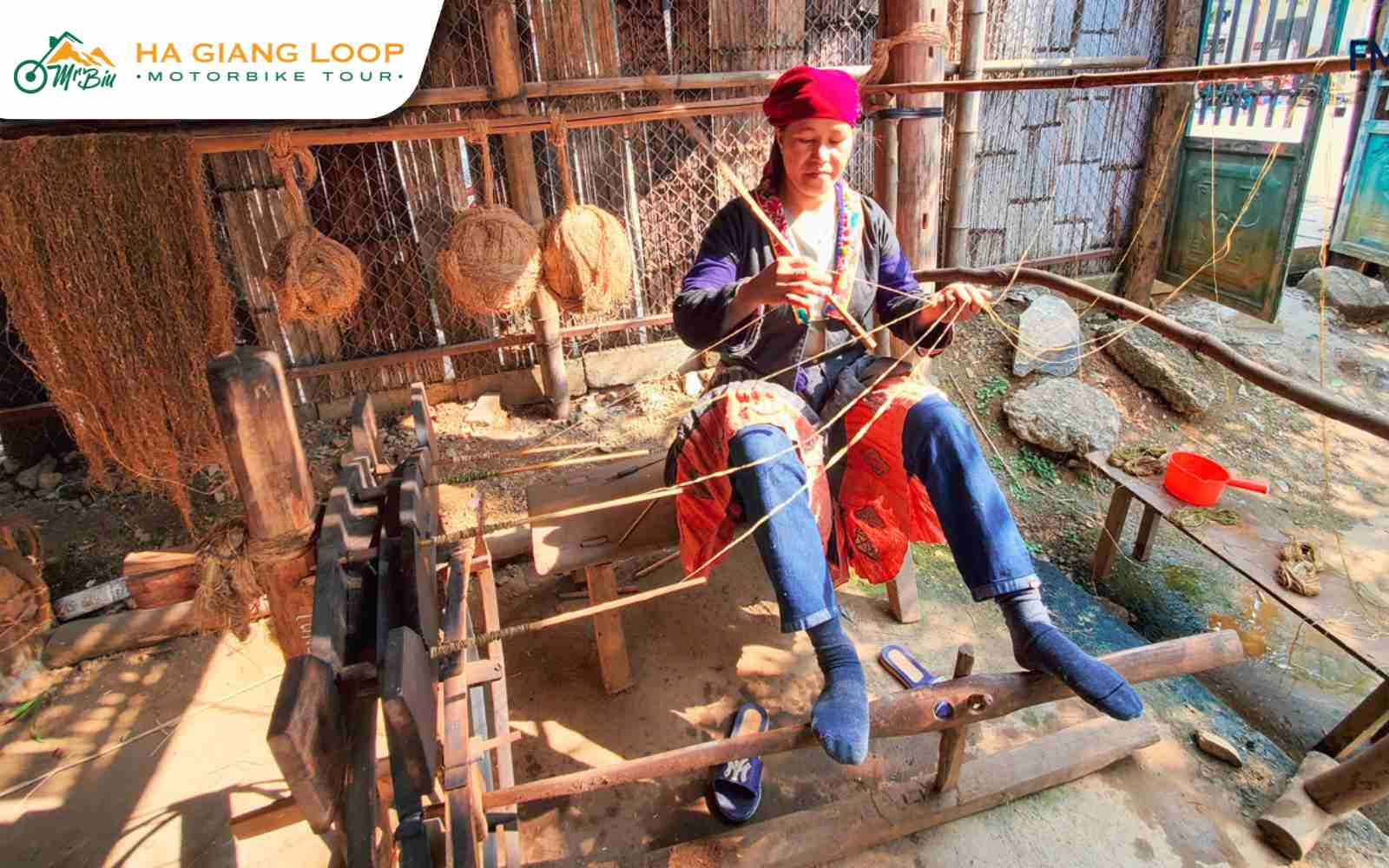
Dating back over 100 years, the Dong Van Old Quarter is one of the oldest ethnic villages in Ha Giang. Built during the French colonial era, this historic area features stone houses with Chinese-style roofs, now repurposed as cozy cafés, homestays, and souvenir shops. On Sunday mornings, the entire quarter comes alive with locals from surrounding ethnic villages in Ha Giang gathering here to trade produce, textiles, livestock, and traditional garments. As night falls, the lantern-lit streets and old façades evoke a nostalgic charm rarely found elsewhere. Whether you’re drawn to history, architecture, or people-watching, Dong Van Old Quarter offers a deep dive into the cultural crossroads of northern Vietnam.
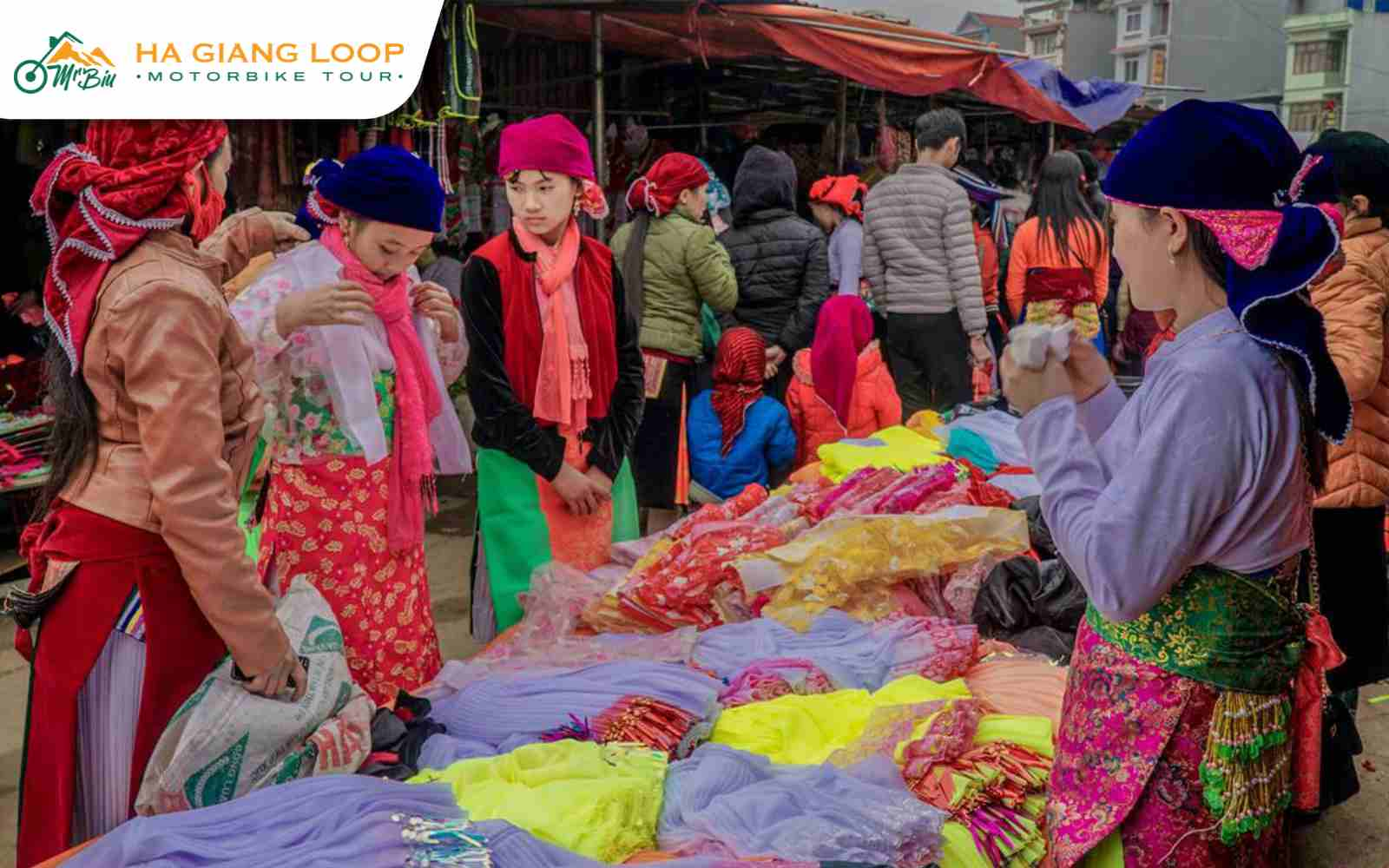
Along the scenic road between Dong Van and Lung Cu, Ma Le Village is a hidden gem that offers a refreshing pause from the busier stops on the Ha Giang Loop. Home to over 50 households, primarily of the Giay ethnic group, this village impresses visitors with its century-old yellow clay houses and authentic mountain lifestyle. When traveling to this region, you can walk along peaceful trails, admire the dramatic karst backdrop, and even stay overnight in a local homestay to fully experience daily life.
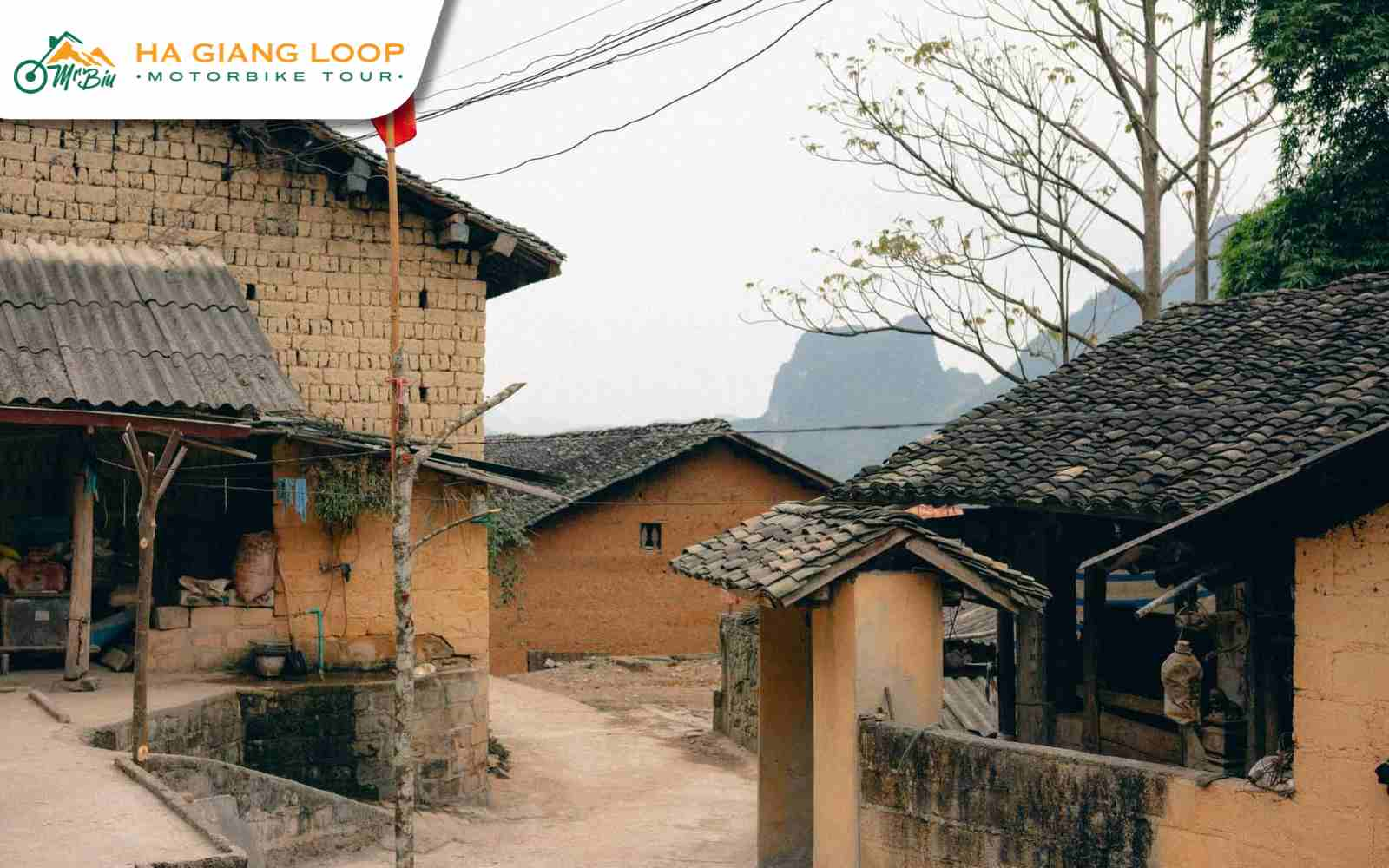
Pho Bang is one of the most unique villages in Ha Giang, quietly tucked away near the Vietnam–China border. This village is home to H’Mong communities and Chinese descendants, giving it a rare blend of cultural heritage. Walking through Pho Bang, travelers will encounter old clay-walled houses with faded wooden doors, some still bearing traces of ancient Chinese characters. What makes Pho Bang truly special is its sense of isolation. There are no bustling restaurants, souvenir shops, or even stable phone reception — and that’s precisely its charm. The stillness here invites you to pause, listen, and soak in the quiet rhythm of mountain life.
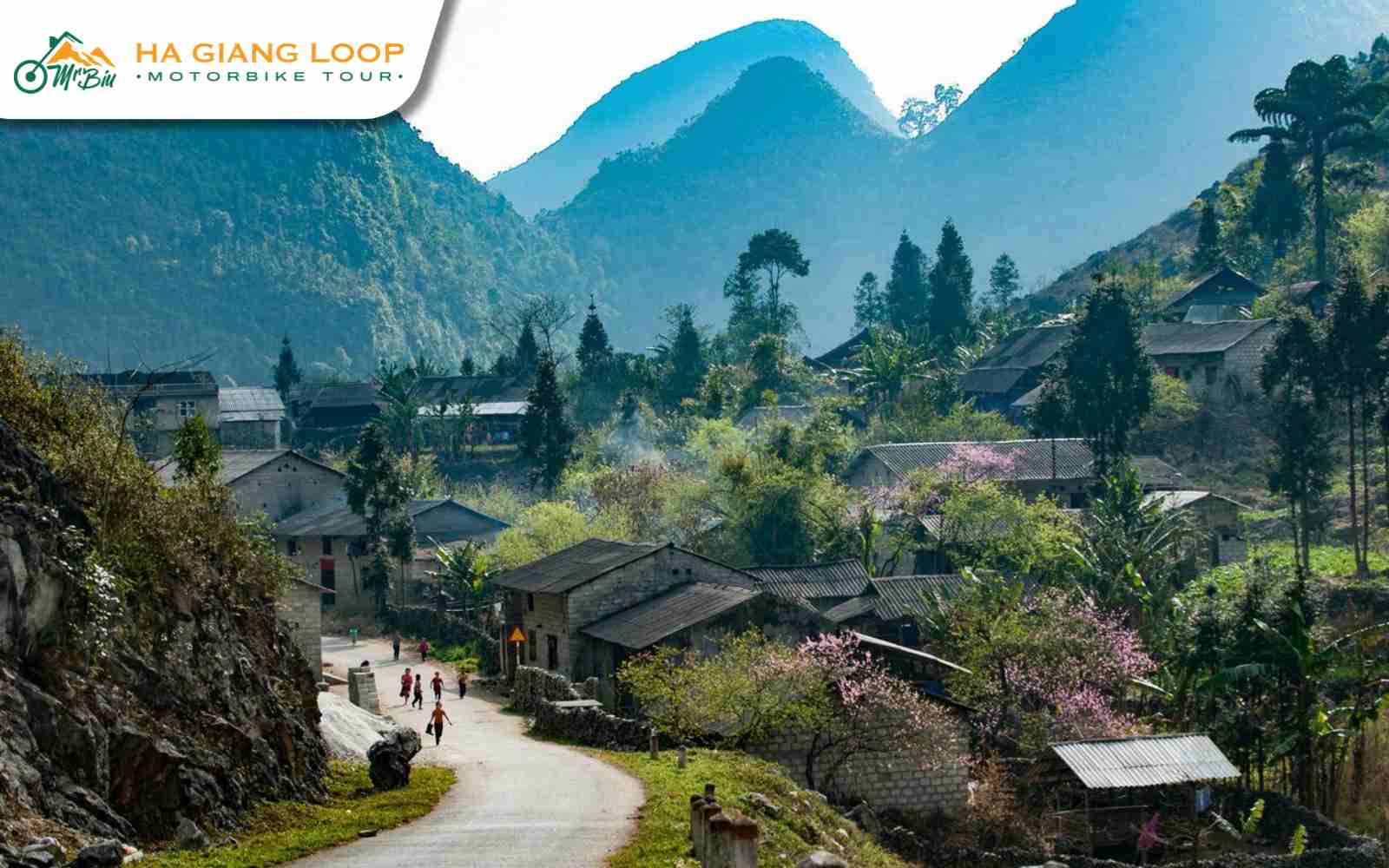
Exploring villages in Ha Giang offers travelers unforgettable cultural moments but also requires mindfulness and preparation. To ensure a memorable and rewarding trip, here are some essential tips:
>>Read now: What To Bring To The Ha Giang Loop: A Packing Guide
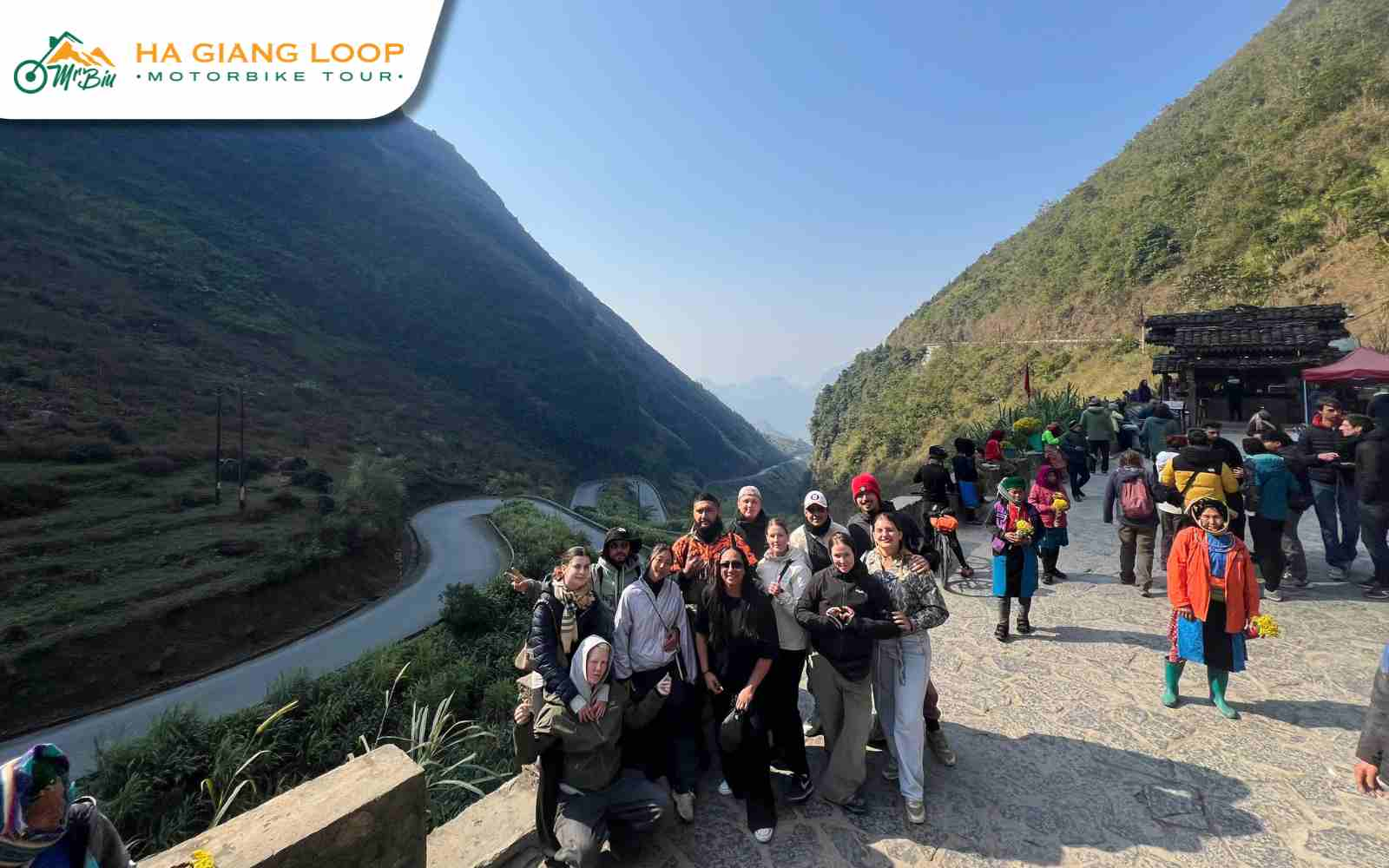
Looking to escape the typical tourist traps and immerse yourself in authentic village life in Ha Giang? Mr. Biu Tour Ha Giang offers genuine Ha Giang motorbike tour 4 days 3 nights and Ha Giang motorbike tour 3 days 2 nights committed to taking you deep into Ha Giang’s ethnic minority villages. You’ll experience homestays with local families, participate in traditional activities, and explore landscapes untouched by mass tourism.
Unlike run-of-the-mill tours, Mr. Biu crafts personalized itineraries focusing on Ha Giang’s most beautiful villages, like Du Gia, Dong Van, and Thai An. On two wheels, we’ll also guide you through the region’s most breathtaking routes, including the iconic Ma Pi Leng Pass, Duong Thuong, and Mau Due, with stops to savor local cuisine and connect with ethnic minority communities.
With fluent English-speaking local guides and a fleet of meticulously maintained motorbikes, Mr. Biu Tour Ha Giang guarantees a comprehensive, exhilarating, and safe exploration. Don’t wait any longer! Book your tour today, or fill out the form below for a detailed consultation!
The best time to visit Ha Giang is from September to November and March to May. During autumn, golden rice terraces and blooming buckwheat flowers transform the landscape into a picture-perfect setting. The weather is mild in spring, with plum blossoms in full bloom, especially in scenic villages like Dong Van or Lung Cam. Winter can be cold and foggy, while summer brings occasional heavy rains. Plan your trip during the dry months to enjoy Ha Giang’s vibrant cultures at their best.
When traveling to traditional villages in Ha Giang, your best suggestion is to pack light but bright. Weather in the highlands can shift quickly, so bring layered clothing, a light rain jacket, and sturdy walking shoes for uneven terrain. Don’t forget essentials like sunscreen, insect repellent, a refillable water bottle, and a power bank, especially since many villages lack electricity or reception. Bringing personal hygiene items is a good preparation if you’re staying overnight in a homestay.
Yes, you can visit to Ha Giang villages without a tour guide, especially if you’re an experienced traveler comfortable with riding a motorbike or navigating remote areas. However, hiring a local guide significantly enhances your trip as they can help bridge language barriers, introduce you to hidden gems, and provide deeper context about ethnic customs and village history — something Google Maps can’t offer.
In this article, Mr. Biu Tour Ha Giang has conducted 10 must-see ethnic villages in Ha Giang, helping you to delve deeper into local culture and engage directly with ethnic minorities. They’re perfect for independent travel, exploration journeys, or extended cultural experiences. To truly experience the magic of these hidden gems in Ha Giang and ensure a seamless, enriching journey, contact Mr. Biu Tour Ha Giang today!
